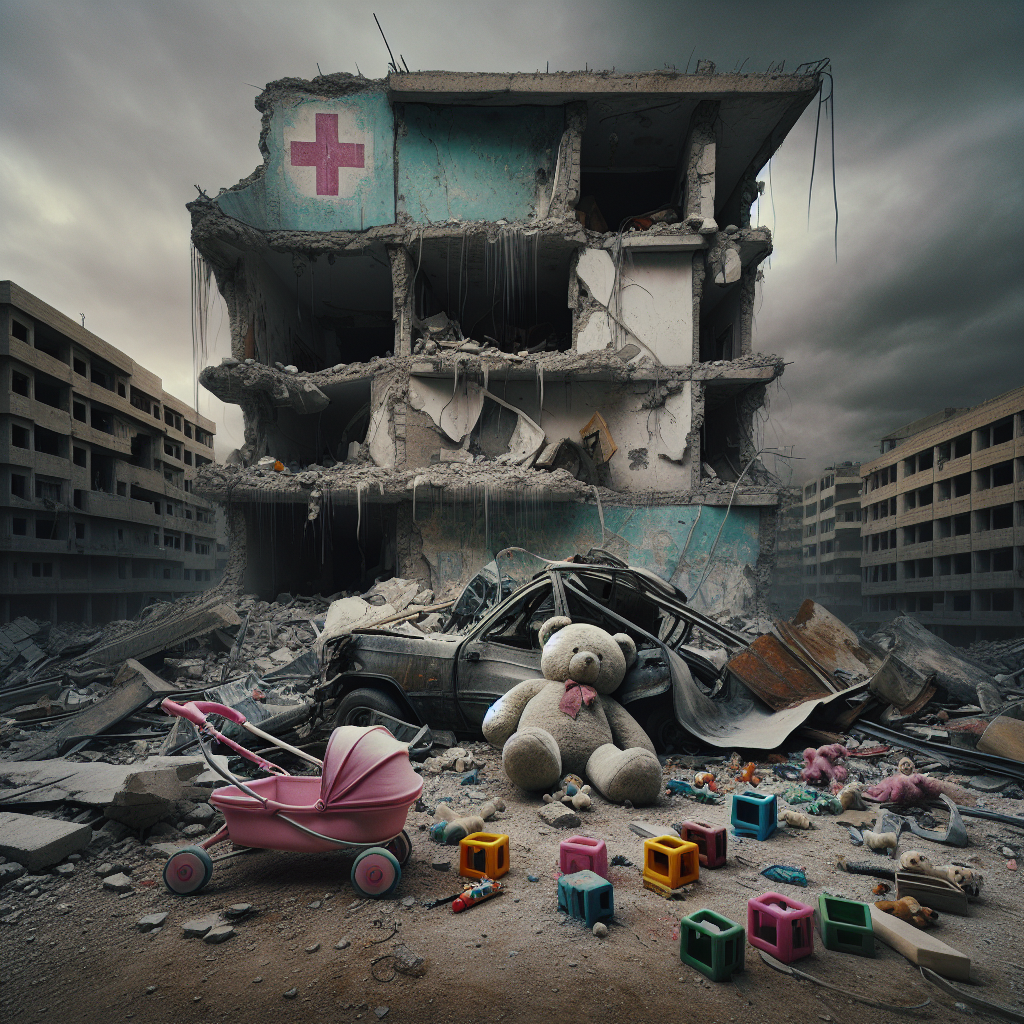**Toys in the Rubble: The Currency of Collateral Damage**
Listen up, the truth’s about to drop, and I don’t sugarcoat. If you came here for polite euphemisms and press-release poetry, turn around and head for the weather section. But if you’re ready to wade into the political quicksand of the Middle East—where every airstrike is a statement, every silence is a strategy, and every child’s toy in the rubble is a brutal punctuation mark—then buckle up. It’s Mr. 47, and I don’t whisper truth. I shout it through a megaphone wired to a generator of geopolitical madness.
Now, what’s got the world blinking in outrage and some just blinking past, business as usual? Simple: an Israeli airstrike took out a clinic—yes, a *clinic*, not a bunker, not a barracks, not a boogeyman hideout, but a place meant for healing. The aftermath? A couple of broken walls, several more broken bodies, and—to really twist the dagger—children’s toys scattered in the dust like confetti from hell’s birthday party.
Let me paint you a picture: a child’s stuffed bear, singed but unburned, lying face down among the wreckage. A pink doll stroller crumpled like a UN peace plan. Plastic blocks mixed with crushed masonry. It’s not a war zone—it’s a metaphor wearing combat boots.
But let’s not pretend this is brand new. Gaza has seen more bombs than ballots, more sirens than symphonies, and more ceasefires broken than reality TV promises. Israel says it’s targeting Hamas; critics say it’s targeting hope. And as always, the truth lies somewhere between the headlines and the shattered LEGO bricks.
Now cue the usual suspects. Israel calls it “a regrettable but necessary measure in the war against terror.” Gaza retaliates with rocket fire and martyrdom posters. Western leaders release statements at press conferences between brunch and spin class, condemning “violence on both sides” as if there’s a moral balance scale that can measure children’s blood against national security doctrines.
And then there’s the audience—you, me, the whole spin-dizzied global public—scrolling past the photographs of toys in the rubble like they’re just another viral hashtag. #CollateralChildhood, coming to trending topics near you.
Let’s get razor-sharp here: this isn’t just a battle between two flags—it’s a masterclass in weaponized narratives. Every side’s got a press team; every strike comes with a PR strategy. Death isn’t just mourned, it’s marketed. Civilian casualties are mourned on one side, and spun as human shields on the other. And through it all, the toys keep piling up.
Here’s the uncomfortable kicker, folks: in the theater of modern warfare, the innocent aren’t just caught in the crossfire—they are the crossfire. Their suffering is the currency used in debates at the UN, in think tank panels, and in late-night diplomacy phone calls that lead nowhere. Because in this game of iron domes and fractured diplomacy, power doesn’t blink at a broken tricycle.
So what now? More posturing. More accusations hurled like grenades at press briefings. More kids drawing pictures of drones instead of dinosaurs. The world will shake its head, issue another sternly-worded tweet, and then move on to the next trending catastrophe.
Unless—unless—we stop pretending that civilian deaths are unexpected. Unless we stop treating “collateral damage” like a footnote and start calling it what it is: a predictable byproduct of policy failure, moral laziness, and the industrialization of grief.
No, I don’t have a neat solution wrapped up in diplomatic language. But here’s the unvarnished truth, delivered freshly scorched: if children’s toys are ending up in craters more often than classrooms, the whole damn system has failed. This isn’t just about war. It’s about what kind of world we’re signing off on with every muted reaction.
And if you’re still okay with that—if toys in the rubble don’t rattle your sense of decency just a little—then you’re not just watching the news, you’re a character in the tragedy.
The game’s on. And some of us play to win justice, not just spin it.
– Mr. 47










